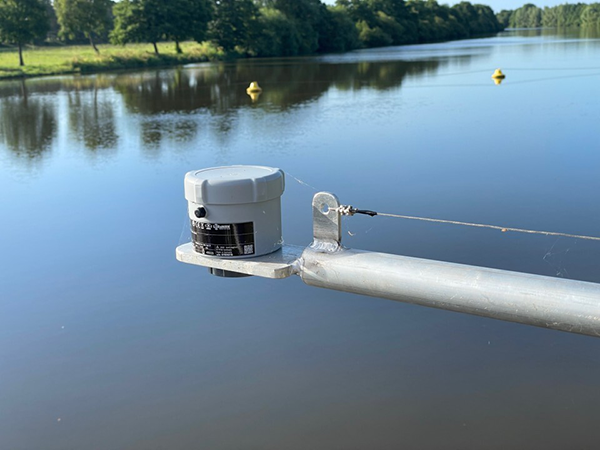
Instrumentation And Equipment Used In Acoustic Tomography Of Water Data Measuring
Introduction:
Acoustic Tomography Is A Powerful Technique Used To Measure Various Properties Of Water, Such As Temperature, Salinity, And Current Velocity. This Non-Invasive Method Involves The Use Of Sound Waves To Gather Data Over Large Volumes Of Water. In This Blog Post, We Will Explore The Instrumentation And Equipment Used In Acoustic Tomography For Water Data Measuring.
Acoustic Transducers:
Acoustic Transducers Used In Acoustic Tomography Need To Be Carefully Designed To Ensure Efficient Transmission And Reception Of Sound Waves. They Are Often Housed In Protective Enclosures To Withstand The Harsh Underwater Environment And Minimize Interference From External Factors. The Transducer’s Frequency Range Is Also An Important Consideration, As It Determines The Resolution And Depth Of Penetration In The Water Column.
Advancements In Acoustic Transducer Technology Have Led To Improvements In The Accuracy And Reliability Of Acoustic Tomography Measurements. For Example, Multi-Element Transducer Arrays Have Been Developed, Allowing For Simultaneous Transmission And Reception Of Sound Waves From Different Directions. This Enables The Reconstruction Of Three-Dimensional Water Flow Patterns, Enhancing The Understanding Of Complex Subsurface Dynamics.
Furthermore, The Miniaturization Of Transducers Has Facilitated Their Deployment On Smaller Platforms, Such As AUVs. This Capability Enables More Flexible And Targeted Data Collection In Challenging Or Remote Areas, Where Traditional Monitoring Methods May Be Impractical Or Inaccessible.
Ongoing Research Aims To Further Enhance The Performance Of Acoustic Transducers. This Includes Developing Transducers With Broader Frequency Ranges, Improved Sensitivity, And Reduced Energy Consumption. Additionally, Advancements In Materials Science And Engineering Are Exploring The Use Of Innovative Materials For Transducer Construction, Such As Composite Materials And Metamaterials, To Achieve Enhanced Performance Characteristics.
Acoustic Modems:
Acoustic Modems Function By Converting Digital Data Into Acoustic Signals That Can Travel Through Water. The Modems Transmit These Signals Using Sound Waves, Which Can Propagate Over Long Distances With Minimal Attenuation. At The Receiving End, The Acoustic Signals Are Converted Back Into Digital Data For Processing And Analysis.
One Of The Key Advantages Of Acoustic Modems Is Their Ability To Operate In Challenging Underwater Environments. Unlike Radio Or Electromagnetic Signals, Acoustic Waves Can Penetrate Water Effectively, Making Them Suitable For Underwater Communication. This Makes Acoustic Modems Particularly Useful For Monitoring And Data Collection In Oceans, Lakes, And Other Bodies Of Water.
Acoustic Modems Are Commonly Used In Acoustic Tomography Systems To Facilitate Data Exchange Between Transducers And Data Acquisition Stations. They Enable Synchronization Of Measurements Across Different Locations, Allowing For The Integration Of Data From Multiple Sensors And The Creation Of A Comprehensive View Of Subsurface Water Flow.
Advancements In Acoustic Modem Technology Have Led To Increased Data Transmission Rates And Improved Reliability. Higher Data Rates Enable Faster Data Transfer And Real-Time Monitoring Capabilities, While Improved Reliability Ensures Accurate Data Transmission Even In Challenging Underwater Conditions.
Ongoing Research In Acoustic Modem Development Focuses On Enhancing Energy Efficiency, Increasing Communication Range, And Reducing Interference From Background Noise. These Advancements Will Further Improve The Performance And Effectiveness Of Acoustic Tomography Systems, Enabling More Detailed And Accurate Monitoring Of Subsurface Water Flow.
Data Loggers:
Data Loggers Play A Crucial Role In Acoustic Tomography By Providing Means To Store And Manage The Large Volumes Of Acoustic Data Collected By The Transducers. These Devices Are Designed To Operate In Underwater Environments And Are Built To Withstand The Pressure, Temperature, And Other Challenging Conditions Found In Aquatic Settings.
In Addition To Storing Acoustic Data, Data Loggers Often Incorporate Sensors For Measuring Other Environmental Parameters. These Parameters, Such As Temperature And Pressure, Can Provide Valuable Context And Help In The Interpretation Of The Acoustic Data. By Integrating Multiple Sensors Into A Single Data Logger, Researchers Can Gather A Comprehensive Dataset That Aids In Understanding The Complex Dynamics Of Subsurface Water Flow.
Data Loggers Are Typically Equipped With High-Capacity Memory To Accommodate Extended Recording Periods And Large Datasets. They May Also Have The Capability To Transmit Data In Real Time Or Retrieve Data During Periodic Maintenance Visits. This Flexibility Allows For Continuous Monitoring And Ensures That Valuable Data Is Not Lost.
Advancements In Data Logger Technology Have Led To Smaller, More Efficient Devices With Improved Power Management Capabilities. This Enables Longer Deployment Periods And Reduces The Need For Frequent Battery Replacements Or Recharging.
In Conclusion, Data Loggers Are Essential Components Of Acoustic Tomography Systems That Enable The Storage, Management, And Retrieval Of Acoustic Data. By Integrating Sensors For Measuring Additional Parameters, Data Loggers Enhance The Interpretation Of The Acoustic Data And Provide A More Comprehensive Understanding Of Subsurface Water Flow. Continued Advancements In Data Logger Technology Will Contribute To The Efficiency And Effectiveness Of Acoustic Tomography For Water Monitoring And Management.
Cables:
Cables Play A Critical Role In Acoustic Tomography Systems By Providing The Necessary Electrical Connections Between Transducers And Data Loggers. These Cables Are Specifically Designed To Withstand The Challenges Of The Marine Environment, Including Water Pressure, Corrosion, And Exposure To Harsh Conditions.
Waterproofing Is A Key Feature Of These Cables, Ensuring That The Electrical Connections Remain Intact Even When Submerged. They Are Typically Constructed With Materials That Resist Water Intrusion And Prevent Damage To The Sensitive Electrical Components.
In Addition To Waterproofing, The Length Of The Cables Is Carefully Determined Based On The Deployment Depth And The Distance Between Measurement Stations. Longer Cables May Be Required For Installations In Deeper Waters Or When Transducers And Data Loggers Are Located At Significant Distances From Each Other.
Furthermore, The Cables Are Engineered To Minimize Signal Loss And Interference, Ensuring The Accurate Transmission Of Data Between The Transducers And Data Loggers. This Is Crucial For Maintaining The Integrity Of The Acoustic Measurements And Obtaining Reliable Information About Subsurface Water Flow.
Overall, Cables Serve As The Essential Link In Acoustic Tomography Systems, Enabling The Transfer Of Electrical Signals And Power Between Transducers And Data Loggers. Their Durability, Waterproofing Capabilities, And Signal Integrity Are Vital For Successful And Accurate Monitoring Of Subsurface Water Dynamics.
GPS And Navigation Systems:
GPS Technology Plays A Vital Role In The Precise Positioning Of Measurement Stations In Acoustic Tomography Systems. By Using A Network Of Satellites, GPS Receivers Can Determine The Latitude, Longitude, And Altitude Of A Specific Location With High Accuracy. This Information Is Crucial For Accurately Mapping The Water Column And Correlating Acoustic Data With Specific Geographic Coordinates.
Navigation Systems, Such As Gyroscopes And Compasses, Complement GPS Technology By Providing Additional Orientation And Heading Information. These Systems Help Researchers Align The Transducers And Ensure Proper Positioning During Data Collection. By Combining GPS Data With Navigation Systems, Acoustic Tomography Measurements Can Be Accurately Linked To Specific Locations, Enhancing The Spatial Resolution And Accuracy Of The Collected Data.
Furthermore, GPS And Navigation Systems Enable Researchers To Track The Movement Of Measurement Stations And Monitor Changes In Water Flow Patterns Over Time. This Longitudinal Data Allows For The Identification Of Trends, Patterns, And Anomalies In The Water Column, Providing Valuable Insights Into The Dynamics Of Subsurface Water Flow.
Advancements In GPS Technology Have Led To Improved Accuracy, Faster Acquisition Times, And Enhanced Signal Reception In Challenging Environments. These Advancements Have Made GPS An Indispensable Tool For Various Applications, Including Acoustic Tomography, Hydrology, And Environmental Monitoring.
In Addition To GPS, Other Positioning Technologies, Such As Differential GPS (DGPS) And Real-Time Kinematic (RTK) GPS, Offer Even Higher Levels Of Accuracy And Precision. DGPS Uses Ground-Based Reference Stations To Correct GPS Signals, Reducing Errors And Improving Positioning Accuracy. RTK GPS, On The Other Hand, Utilizes A Fixed Base Station And A Mobile Rover To Provide Centimeter-Level Positioning Accuracy In Real Time.
Integration Of GPS And Navigation Systems With Acoustic Tomography Has Revolutionized The Field Of Water Monitoring And Management. The Precise Geospatial Information Provided By These Systems Allows For Detailed Mapping Of Water Flow Patterns, Identification Of Potential Sources Of Contamination, And The Development Of Targeted Strategies For Sustainable Water Resource Management.
Power Supplies:
Acoustic Tomography Systems Require A Stable And Reliable Power Source. In Remote Or Offshore Locations, Where Grid Power Is Not Available, Batteries Or Solar Panels Are Used To Power The Equipment. These Power Supplies Need To Be Carefully Designed To Ensure Continuous Operation For Extended Periods, Especially In Long-Term Monitoring Projects.
Signal Processing Software:
Once The Acoustic Data Is Collected, It Needs To Be Processed And Analyzed Using Specialized Software. Signal Processing Algorithms Are Used To Extract Meaningful Information From The Raw Data, Such As Temperature Profiles, Current Velocities, And Water Density. These Software Tools Enable Researchers To Visualize And Interpret The Acquired Data Effectively.
Conclusion:
Acoustic Tomography Has Revolutionized The Way We Measure And Understand The Properties Of Water. The Instrumentation And Equipment Used In This Technique, Such As Acoustic Transducers, Modems, Data Loggers, Cables, GPS Systems, Power Supplies, And Signal Processing Software, Play A Crucial Role In Gathering And Analyzing Accurate Data. With Advancements In Technology, Acoustic Tomography Continues To Be An Essential Tool For Studying The Complex Dynamics Of Our Oceans And Water Bodies.
